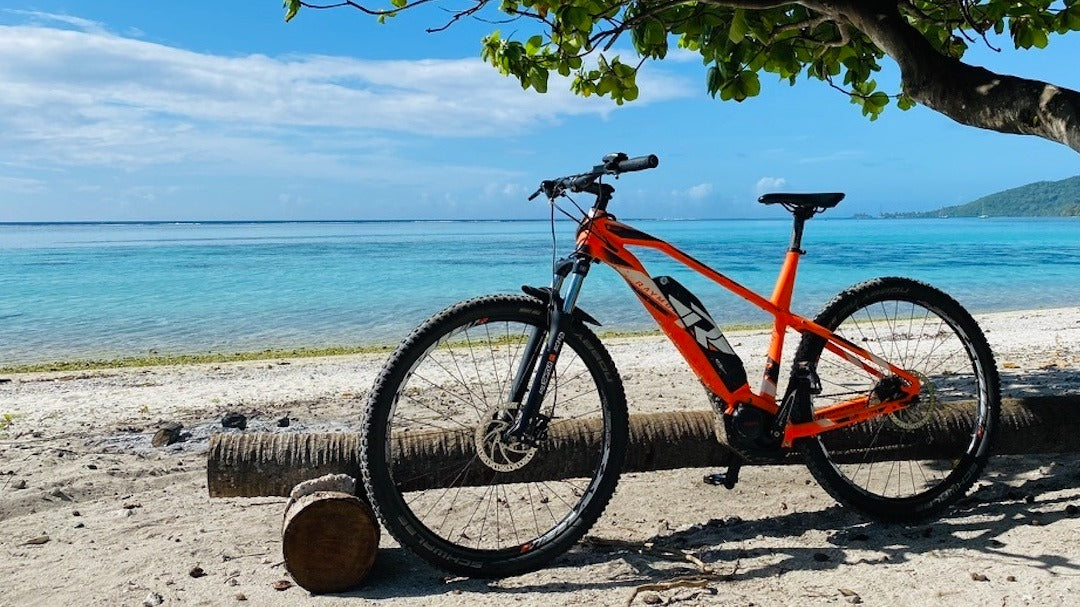I used to be one of those people, a lycra-clad road cyclist weary of people on motor-assisted bicycles (aka e-bikes). I mean, c’mon! I’ve spent years and years hauling my butt up the mountains using nothing but my own strength and determination. Who do these people think they are, athletes? No way!
But after watching e-cycling explode during the pandemic, I decided to invest in an e-bike of my own and see what all the fuss was about. Almost a year on, I’m a convert. Here’s why e-bikes - both road and mountain - are a legit, and fun way to improve your fitness while “riding like you stole it”.

E-cyclists ride extra miles
E-biking makes cycling fun and attainable. Multiple studies have shown that sedentary folks given e-bikes for commuting end up riding more than those with analog bikes [1, 2]. So, even though e-biking requires less energy than riding an analog bike (energy expenditure on an e-bike is about 24% lower than regular cycling), e-cyclists tend to make up for it with extra miles [2]. Moreover, e-cyclists record higher levels of enjoyment after their journey than people on conventional bikes [2].
“Commuting on an e-bike allowed me to ride at high frequency, intensity and volume without incurring too much training load and fatigue. I could approach the weekend fresh and get in 100+ miles on the road bike. Plus it was really fun”, says Thomas Gross, a regular in the Northern California road racing scene.
For him commuting on an e-bike was so appealing he rode it rain or shine. Besides gaining fitness Gross assures the cost and time savings commuting on an e-bike “were huge.”

Does e-biking make people fitter?
Fun aside, many people think motor-assisted riding doesn’t make you fitter and healthier, but that may not be entirely true.
Regular e-cyclists record metabolic equivalents (MET) consistent with moderate to vigorous intensity exercise [2,3]. The CDC currently recommends 150 minutes of moderate-vigorous intensity physical activity per week for optimal cardiovascular health.
A study done on electric mountain bike (eMTB) riders revealed that when riding an eMTB, average heart rate was 94% of that achieved during a non-assisted ride. Cyclists also reported lower perceived exertion levels on the eMTB, although they rode faster and completed the route quicker [4].
Some studies also indicate that e-biking may improve V02 max (a measure of fitness), although the benefits seem to be smaller among the physically fit [3].
These studies clearly show that if e-bikes can replace cars for at least some of the trips, they’re well worth the price, at least from a public health point of view. Moreover, e-bikes have a couple of assist modes that can make a ride more or less rigorous and enable riders to progress as they gain fitness.

E-biking advantages for competitive athletes
Let’s dig deeper into the benefits of e-biking for seasoned, fit individuals who have been riding and competing on conventional bikes for years.
In the USA there are three classes of e-bikes defined by the type of assist and how fast they’ll propel you forward. By law, the maximum speed for an e-bike is 28mph. If you’ve ever done more than a casual cruise around the neighborhood, you’ll know that’s a pretty good pace and difficult to sustain on a conventional bike.
Rumor has it that most pro teams now use e-bikes for training purposes because they expand training possibilities for the team. For example, when the team is training on mountains you can have one member on an e-bike, going at a slightly faster clip, to help everyone on the team get fitter and stronger
“E-bikes have definitely opened up more options for me when it comes to terrain as well as distance”, says Colin Daw, a cycling enthusiast who’s been riding conventional bikes most of his life.
“If I’m short on time I can still cover a longer route. And when I want to do a recovery ride I let the motor help me on climbs and keep my watts and heart rate steady.” - Colin Daw, cycling enthusiast.
Another setting where e-bikes are a great advantage is when you’re riding with a group of fitter cyclists. You can use appropriate assistance and stay with the group instead of watching their backs disappear up the mountain. E-bikes give you the option to ride longer and also to venture to places normally beyond your fitness levels. It’s a great way to build endurance, but you have to remember that each battery has its range. Pedaling home on a bike that’s about 50% heavier than your traditional bike is no picnic.

The verdict on e-bikes
There’s no denying it, e-bikes are here to stay and for a good reason. They can get more people commuting sustainably and building fitness, and make exercise fun and approachable for many. Don’t get me wrong, I haven’t ditched my regular bike, but the e-bike has given me a new way to explore distant roads and challenge my skills. I’ve noticed myself looking forward to the steepest of climbs and doing multiple efforts on them using the medium assist mode and pedaling as hard as I can to keep my heart rate high. E-biking is no walk in the park, but I love that it gets me up unthinkable hills and leaves me feeling like superwoman, at least temporarily.
Disclaimer: The text, images, videos, and other media on this page are provided for informational purposes only and are not intended to treat, diagnose or replace personalized medical care.

Share:
What causes runner’s stomach and how to prevent it
Does going keto improve cycling performance?